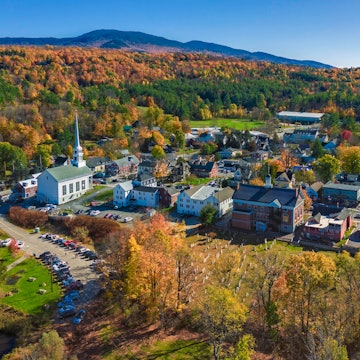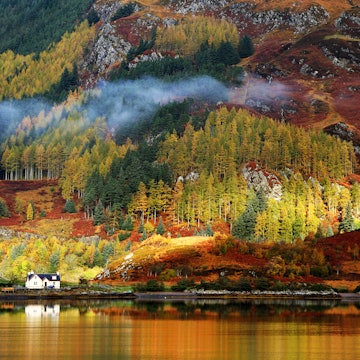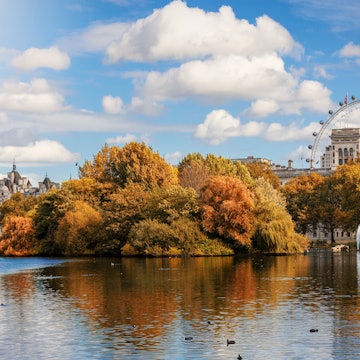

A view of Crater Lake through pine trees on the shore. Kelly vanDellen/Shutterstock
As a state largely defined by its lush landscapes and known for healthy rainfall, much is made about Oregon’s famous lakes and rivers. But in southern Oregon, some 90 minutes north of the border with California, one body of water rules them all – Crater Lake. This caldera on Mt Mazama is the deepest lake in the US, and it lends its name to the state’s only national park.
Beyond the statistics, Crater Lake National Park contains several of the top things to do in Oregon, especially if you enjoy the great outdoors – take your pick from fishing, camping, glamping, cycling and swimming. So whether you’re looking for a scenic weekend getaway, an epic hiking adventure, or a relaxing (and informative) boat tour, Crater Lake is a premier destination. Here’s everything you need to know.
History of Crater Lake National Park
Crater Lake checks out as Oregon’s best national park. Sure, it's in a field of one, and is still relatively obscure compared with West Coast heavy-hitters like Yosemite, Olympic, Glacier, and Yellowstone, but it's also the fifth-oldest national park in the US.
Established in 1902 by William Gladstone Steel, a journalist and mountaineer who had campaigned for 17 years to have it designated as a national park, the eponymous lake is actually a caldera, formed some 7700 years ago when the Mt Mazama volcano erupted and caved in on itself. This massive eruption is why Crater Lake is so deep.
Reliant on snowmelt and rainwater to fill the basin, it took nearly 800 years for Crater Lake to reach capacity, but the results are utterly spectacular. The lake's glacier-clear, berry-blue color comes from the purity of the water. With a depth of 1943ft, it’s the deepest lake in the US and the ninth-deepest in the entire world.
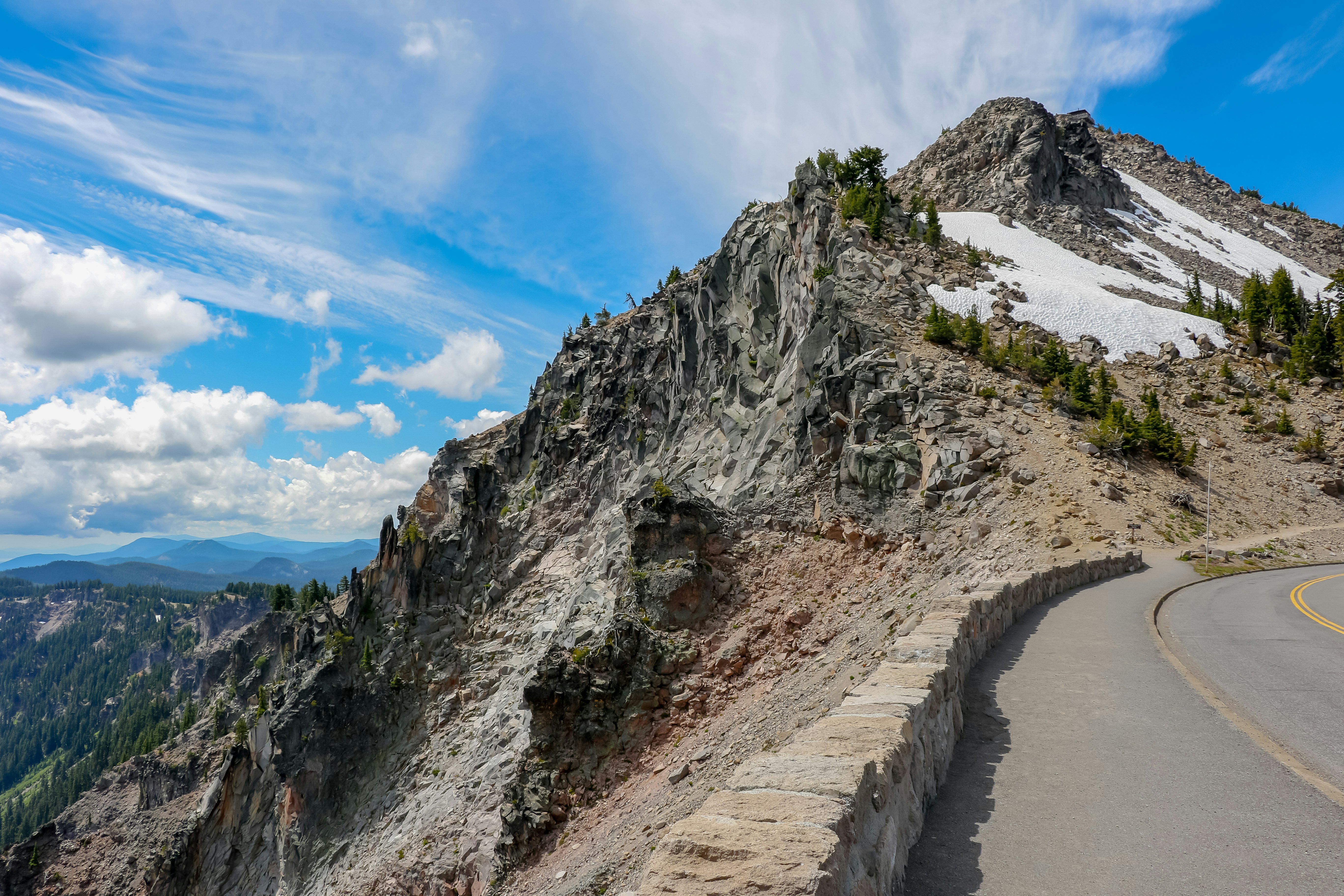
How do you get to Crater Lake?
Crater Lake National Park has three main entrances:
The west entrance: Drive northeast from Medford (the closest town) on Oregon 62 for 75 miles.
The south entrance: Drive north on US 97 from Klamath Falls, then northwest on Oregon 62.
The north entrance: Drive east on Ore. 138 from Roseburg to Rim Drive. This entrance is only open in the summer.
There are three airports within driving distance of Crater Lake.
Fly to Portland (PDX) and drive five hours south to the north entrance.
Fly to a regional airport – Redmond (RDM) or Medford (MFR) – and drive two hours to the south entrance.
If you are traveling in the winter, make sure to check the website or call the headquarters to scope out road conditions ahead of time.
When is the best time to visit Crater Lake?
While Crater Lake is a wonderful national park for all four seasons, it's wise to check the weather in order to prepare for your trip. The summer months are the best time to visit since the weather tends to stay dry and pleasantly warm during the day. However, due to Crater Lake’s elevation (6178ft at the surface), nighttime temperatures can drop to near freezing and the occasional dusting of summer snow is to be expected. Pack thermal layers and adequate sleeping bags if you plan to camp overnight.
Meanwhile, the winter season at Crater Lake tends to be long and covered with a glistening white carpet – the park has an annual average snowfall of 41ft. While it’s possible to get some mild and dry days during the spring and fall shoulder seasons, Crater Lake's major snowfall tends to start in October and remains heavy until as late as June.

Camping at Crater Lake
There are two campgrounds within the park itself. Both are only open for the peak season (usually May-September/early October) due to the heavy snowfall throughout the winter season.
Mazama Campground
South of the lake, Mazama Campground is a breathtaking 6000ft-high site with 214 pitches. Each one has a fire ring, a picnic table, a bear-resistant food locker, and access to restrooms and showers. The campsite experiences beautiful weather in the summer with highs of 65-75°F. The nights are clear and cool, with a scattering of stars unobstructed from light pollution.
Note that Mazama Campground is the only area at Crater Lake National Park where RVs and trailers are allowed to park overnight, and you can usually reserve a slot from mid–June through September. If no RV reservations are available when you’re planning to visit, there are some campgrounds outside the national park boundaries where RVs can park overnight.
Lost Creek Campground
This remote, tent-only campground has just 16 pitches for bold, outdoorsy types. Located around 12 miles from the park headquarters, Lost Creek doesn’t open until the snow and any debris have been cleared from the access road, usually in July.

Other accommodations at Crater Lake
Perched on the rim of the caldera, Crater Lake Lodge has the pick of the views. This 71-room lodge with a popular restaurant (freshly caught halibut, anyone?) has knockout vistas of both the lake and the surrounding wilderness. Built in 1915, the hotel rooms have been remodeled, but the public spaces retain a rugged, mountainside aesthetic.
Meanwhile, at Mazama Village, you’ll find a small collection of cabins in a Ponderosa pine forest that’s about 7 miles south of Rim Village. Mazama Village also has the Annie Creek Restaurant and Gift Shop that’s open for lunch and dinner, and a store that’s stocked with groceries, firewood and camping supplies. Keep in mind that these cabins are only available from late May to late September.
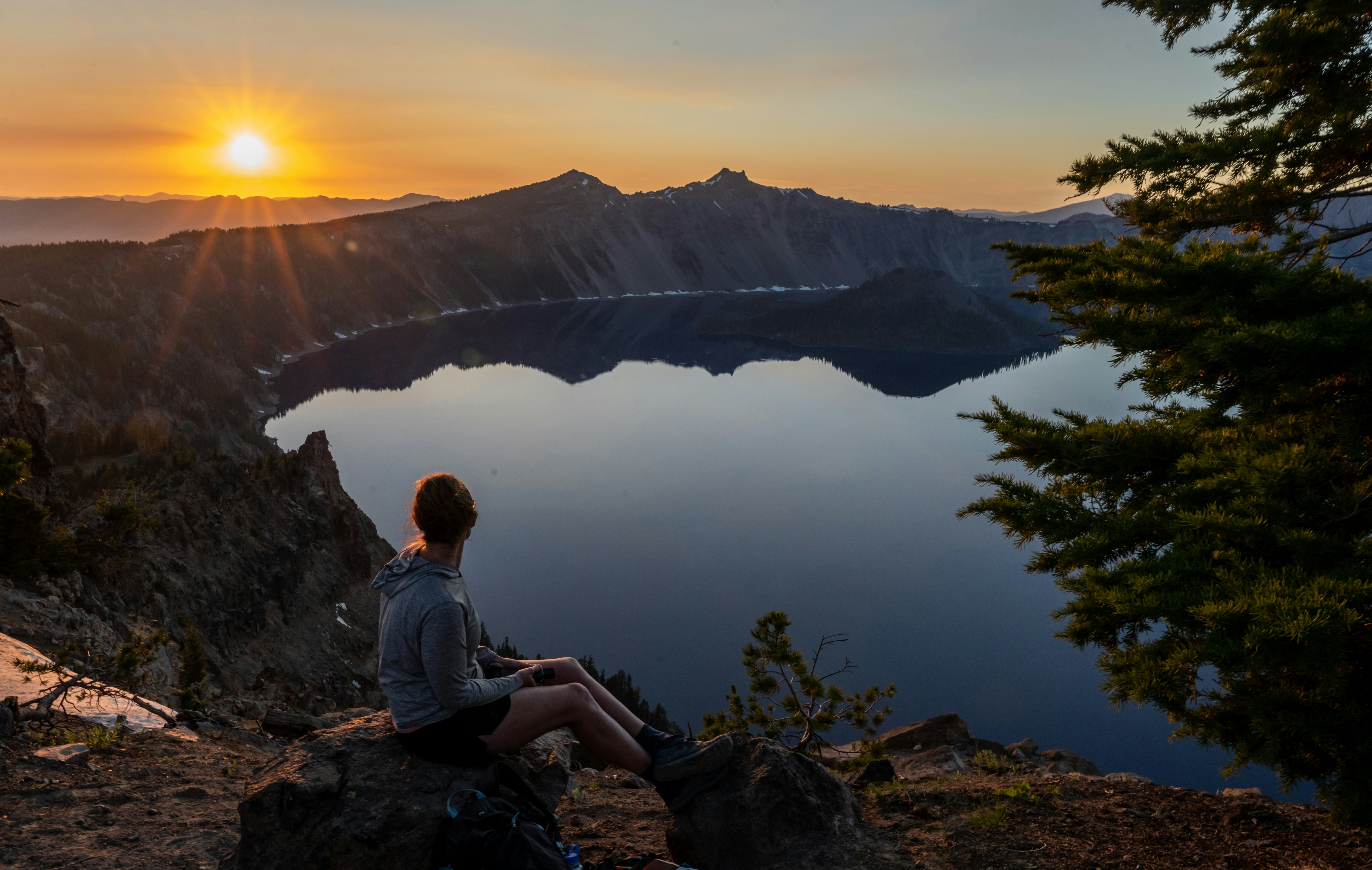
Hiking at Crater Lake
There are more than 90 miles of hiking trails through Crater Lake National Park, each varying in length and accessibility. For a difficult summit hike, try the 5-mile round trip to the top of 7976ft-high Garfield Peak for the best panoramic views in the park.
On the easier side, the Castle Crest Wildflower Garden Trail provides a gentle 0.4-mile walk directly from the Steel Visitors Center through an array of flora.
Cycling at Crater Lake
Topping out at just below 8000ft above sea level with frequent hills, the 33-mile-long Rim Drive may only be suited to advanced cyclists, but the rewards are exceptional. Fresh mountain air, pristine wilderness, awe-inspiring views of the lake, and regular stops for photo ops and water breaks.
Note that there are no bike lanes. For an easier, traffic-free ride, check out Grayback Drive, which has eight miles of vehicle-free, unpaved terrain.
Things to do at Crater Lake for families
There's plenty to keep the family entertained at Crater Lake National Park. The visitor center is a good place to start with its interactive exhibits about the history and formation of the lake.
Crater Lake Trolley offers daily tours from July to mid-September that navigate the entirety of Rim Drive, with several stops to allow visitors to stretch their legs and snap some incredible photos. It's the perfect option for family groups as you get to see the beauty of Crater Lake from a safe, enclosed trolley that is wheelchair accessible. A ranger is also on board to narrate the journey and answer any questions you may have. Tickets are available in Rim Village but it's wise to book in advance as this is a popular attraction. Boat tours are currently unavailable due to extensive renovations but are expected to resume in 2028.
Other family-friendly things to do include horse riding in the warmer months and snowmobile trips in the winter.
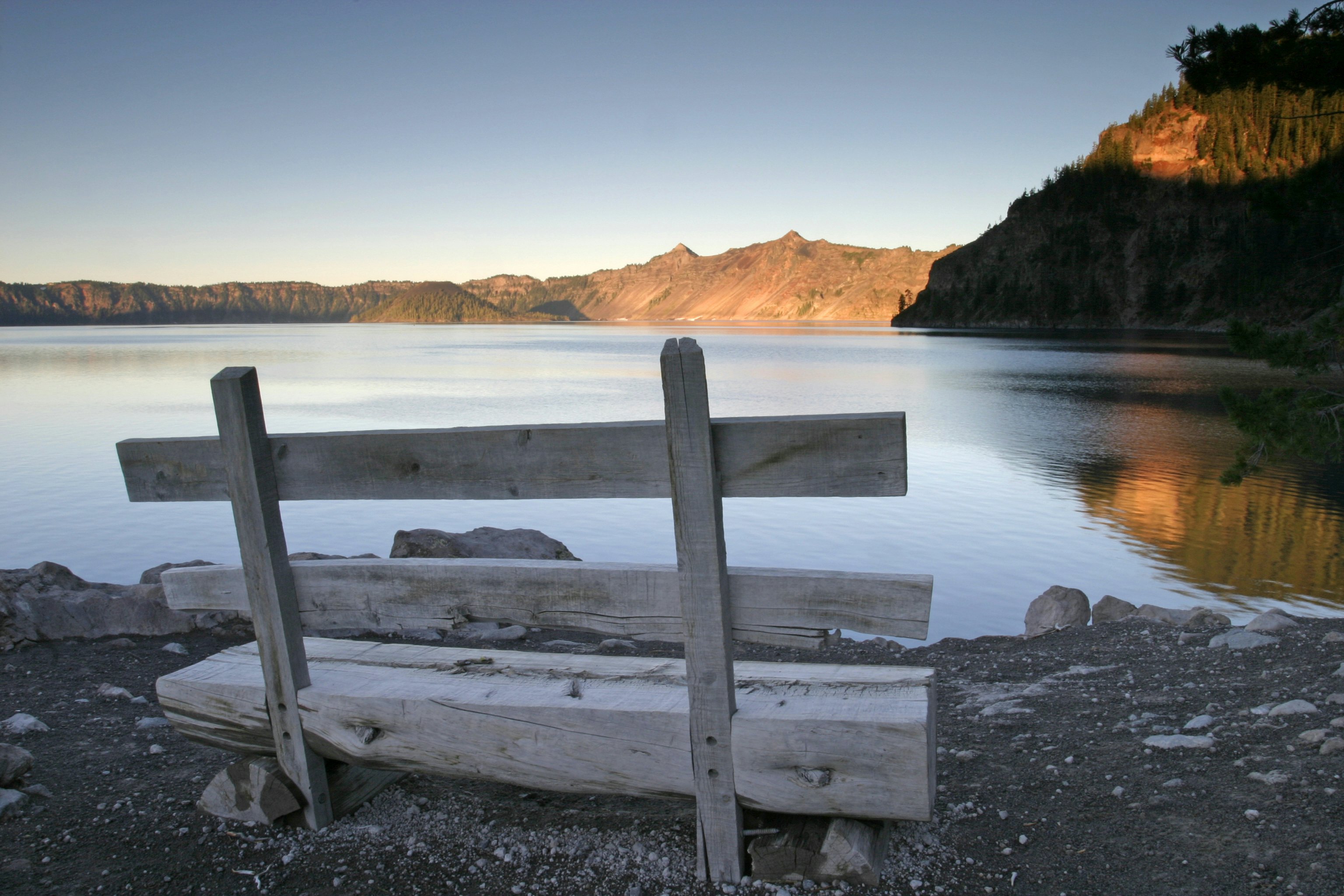
Can I swim in Crater Lake?
Yes, visitors can swim in Crater Lake. If you're in the mood for a dip, hike along the Cleetwood Cove Trail, a short, steep, partially shaded path from Rim Drive down to the shoreline. Cleetwood Cove is the only stretch of Crater Lake shoreline that you can legally access, so this is the only area of Crater Lake where you’re allowed to swim. Note that this trail will be closed for rehabilitation works for the 2026, 2027 and 2028 seasons.
Most lake water comes from snowmelt, so even in summer, the surface temperature can average just 57°F. Pack a towel and some dry clothes. Only bathing suits and basic clothing can be worn in the water. Scuba and snorkeling gear, wet suits, goggles, inner tubes, kayaks, rafts and anything else that can potentially introduce invasive species into the lake are not permitted to protect its clarity.











